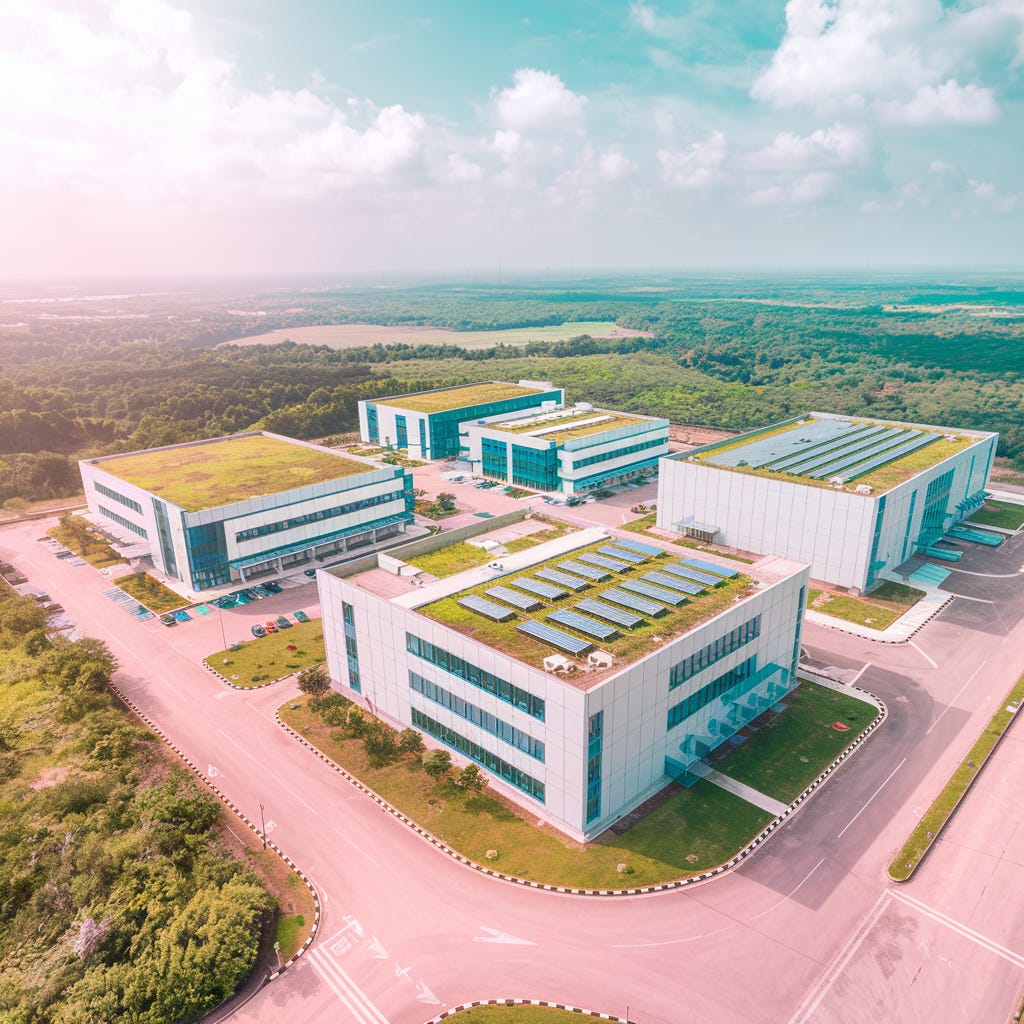From 'Fancy Warehouses' to Digital Backbone: My Journey Through the Data Center Revolution
How My Understanding of an Entire Industry Had to Transform
When I started investing in data centers, I dismissed them as "fancy warehouses with good air conditioning."
Like many investors at that time, I viewed them through a simplistic lens—as specialized real estate with blinking lights and complex cooling systems.
Today, I recognize them as the foundational infrastructure of our digital economy—the essential backbone supporting cloud computing, artificial intelligence, and global connectivity.
This transformation in perspective didn't happen overnight, and the lessons learned along the way offer valuable insights for anyone interested in digital infrastructure investments.
My Starting Point: Real Estate with Computers
My initial position was far from ideal:
Experience in digital infrastructure? Considerable.
Data center expertise? Practically zero.
Global sector trends and market growth drivers? A complete mystery.
This knowledge gap wasn't unique.
In the investment community, data centers were widely misunderstood.
They were categorized primarily as real estate assets with technical components rather than as critical digital infrastructure. This categorization fundamentally influenced how they were valued, developed, and operated.
The Paradigm Shift: From Buildings to Utility
During our assessment of a hyperscale data center project in West Africa, reality hit me.
As we analyzed the development process, reviewed customer pipeline, and evaluated operating KPIs and valuation metrics, I realized: "This isn't real estate—this is the new utility of the digital age."
This epiphany came from seeing how the facility would fundamentally alter digital service delivery across multiple countries.
It wasn't just about square footage, power capacity, or cooling systems. It was about enabling cloud services, accelerating digital transformation, and connecting previously underserved markets to the global digital economy.
Abandoning Misconceptions
The transformation in our approach required abandoning three critical misconceptions:
"Data centers are an opportunistic play" - This short-term thinking focused on quick returns rather than strategic positioning in a rapidly evolving digital ecosystem.
"Enterprise colocation is the primary growth driver" - While enterprise colocation was important, hyperscale demand was becoming the dominant force reshaping the industry landscape.
"Emerging markets will follow developed market patterns" - We discovered that emerging markets were developing their own unique trajectories, influenced by different factors than those that shaped developed markets.
A Strategic Pivot
Instead, we embraced a more forward-looking strategic approach: focus on emerging markets with the right combination of cloud demand, infrastructure, and regulatory environment that have or will attract hyperscale investment.
While others hesitated, we moved decisively—examining power availability, fiber connectivity, and policy frameworks to identify tomorrow's data center hubs.
A New Methodology
Our methodology transformation included:
Analyzing global sector trends comprehensively
Identifying the most promising emerging markets
Understanding that hyperscalers were driving unprecedented demand
This approach allowed us to look beyond traditional metrics and see the bigger picture.
Rather than focusing solely on current occupancy rates or near-term returns, we evaluated markets based on their potential to become significant digital hubs.
The Long-Term View: Beyond Traditional Metrics
The most powerful insight?
The old metrics ($/kW, occupancy rates, EBITDA multiples) are dangerously limited. What matters is understanding global sector trends and market-specific dynamics that drive sustainable growth.
For example, in several emerging markets, we found that focusing exclusively on current absorption rates would have led us to miss significant opportunities.
By examining submarine cable landings, cloud region announcements, and digital adoption trajectories, we identified markets that were poised for explosive growth before traditional metrics reflected this potential.
The Results of Our Strategy Shift
The results were significant:
Increased exposure to the sector
A more diversified global data center portfolio across regions
Strategic diversity across data center types and financing instruments
Perhaps more importantly, this shift positioned us at the forefront of several emerging market opportunities that others had overlooked or undervalued. By the time these markets gained wider recognition, we had already established strategic positions and relationships.
Practical Applications: Learning from Our Experience
For those navigating this space, focus on:
Understanding global growth drivers and their regional impacts - Recognize that global trends manifest differently across regions. The factors driving data center growth in Singapore differ from those in Nigeria or Brazil.
Viewing these assets through an infrastructure lens, not just real estate - This perspective shift fundamentally changes how you assess value, potential, and risk.
Mastering the unique economics and KPIs of the sector - Data centers have their own metrics and economics that differ significantly from both traditional real estate and other infrastructure assets.
The Future Landscape
Looking ahead, the data center industry will continue to evolve rapidly. Edge computing, AI infrastructure demands, and sustainability requirements are reshaping facility design, location strategies, and operational approaches.
The lines between different types of digital infrastructure—data centers, fiber networks, cell towers, and satellite systems—are blurring.
The most successful investors and operators will be those who understand these convergence points and their implications.
The Journey Continues
My journey from viewing data centers as "fancy warehouses" to recognizing them as essential digital infrastructure reflects the broader evolution in how these assets are perceived and valued in the market.
The sector has matured significantly, but it continues to evolve at a remarkable pace. Success requires constant learning, adaptation, and a willingness to challenge conventional wisdom.
What has been your experience in the data center sector? I'd love to hear how your perspective has evolved. Share your journey in the comments!
This article reflects personal insights gathered from years of investing in digital infrastructure across global markets. It is not investment advice but rather a perspective on how understanding sector dynamics can drive more informed strategic decisions.

